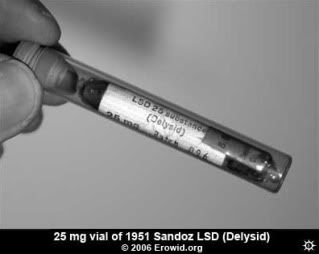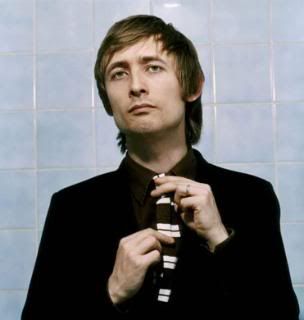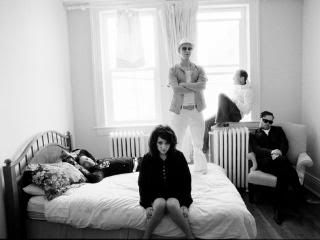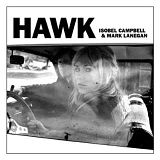THE PSYCHEDELIC CHRONICLES: PART II
Ken Kesey, the Merry Pranksters & the CIA Funded "Acid Tests" at Menlo Park Veteran's Hospital
 Ken Kesey: great American novelist, Merry Prankster, LSD evangelist, & cultural provocateur
Ken Kesey: great American novelist, Merry Prankster, LSD evangelist, & cultural provocateur
Psychedelic music wasn't introduced as an element of of the LSD subculture until early 1965. From 1959 until 1965, the psychedelic subcultural landscape was populated by members of the literary and visual arts communities & a handful academics studying LSD use as a tool for psychoanalysis. The most notable academics were two Harvard professors, Timothy Leary & Richard Alpert, a pair of research scientists who presided over the Harvard Psilocybin Project. Psilocybin is a mushroom with psychedelic properties which Alpert obtained by piloting his own airplane to Mexico to obtain supplies. In 1963 Alpert & Leary were dismissed by Harvard for allegedly giving psilocybin to an undergraduate student. After their dismissal Leary & Alpert drifted to California and crossed paths with Ken Kesey a promising author and notorious advocate of universal LSD use.
It all began in 1959, when a talented and promising young writer named Ken Kesey decided to expand his creative horizons by enlisting as a subject in a CIA financed medical study on the effects of LSD. The study was conducted at Menlo Park Veteran's Hospital, San Jose California. At the time Kesey was a master's program candidate in creative writing at the prestigious Stanford University.
Prior to 1959, Kesey appeared to be a paragon of the 1950s Eisenhower era version of the American Dream: Kesey was born & raised in small town Oregon; varsity wrestling star in high school; pledged to the Beta Theta Pi fraternity at University of Oregon; married his high school sweetheart shortly before graduating from U. of O., was awarded the prestigious Woodrow Wilson Scholarship to enroll in post graduate studies at Stanford University. On the surface Kesey appeared to be the incarnation of the all-American boy on the straight and narrow path to becoming a pillar of the community.
All of Ken Kesey's aspirations to traditional success by the conventional standards of the American Dream came to a crashing halt after his participation in the Menlo Park LSD study.
Perhaps the biggest paradox of the Sixties cultural revolution is that American’s primary agency of global imperialism, the CIA, unwittingly gave birth to the psychedelic culture by sponsoring the Menlo Park and countless other studies to evaluate the use of LSD as a truth serum to be used in interrogations of enemy agents.
Journalist David Price examined declassified CIA documents & summarized their contents:
Quote:
|
The CIA became interested in LSD when they read reports alleging that American prisoners during the Korean War were being brainwashed with the use of some sort of drug or “lie serum.” LSD was the original centerpiece of the United States Central Intelligence Agency's top secret MK-ULTRA project, an ambitious undertaking conducted from the 1950s through the 1970s designed to explore the possibilities of pharmaceutical mind control. Some studies investigated whether drugs, stress or specific environmental conditions could be used to break prisoners or to induce confessions. Between 1960 and 1963, the CIA gave $856 782 worth of grants to different organizations. The researchers eventually concluded that LSD's effects were too varied and uncontrollable to make it of any practical use as a truth drug, and the project moved on to other substances.
|
The CIA had discovered the existence of LSD from an unnamed insider at the Sandoz Laboratory where a chemist discovered the psychotropic properties of LSD in a lab accident.
LSD (shorthand for
lysergic acid diethylamide) was an accidental discovery of research scientist, Albert Hoffman who was an employee of the Swiss based pharmaceutical company Sandoz Laboratories. Hoffman first synthesized LSD in 1938 as a medical remedy for respiratory and circulatory ailments and set aside the formula for five years without conducting any test studies. ON April 19, 1943, when Hofmann decided to reexamine his shelved LSD study. While re-synthesizing LSD, he accidentally absorbed a small quantity through his fingertips and serendipitously discovered its powerful effects. He described what he felt as being:
Quote:
|
... affected by a remarkable restlessness, combined with a slight dizziness. At home I lay down and sank into a not unpleasant intoxicated-like condition, characterized by an extremely stimulated imagination. In a dreamlike state, with eyes closed (I found the daylight to be unpleasantly glaring), I perceived an uninterrupted stream of fantastic pictures, extraordinary shapes with intense, kaleidoscopic play of colors. After some two hours this condition faded away.
|
It was Hoffman's lab accident that gave birth to the psychedelic age.

A vial of Sandoz LSD 25
Ken Kesey was transformed into a psychedelic evangelist upon his first taste of Sandoz LSD 25 and hailed it's value as a tool of spiritual discovery and self enlightenment. Kesey wrangled a job sweeping the floors in the psychiatric ward of the Menlo Park Hospital which allowed him to hijack a large part the hospital's supply of 1.5 million doses of Sandoz LSD. Kesey simply waltzed his broom into the hospital's pharmaceutical supply room and stuffed his pockets with a couple dozen vials of LSD at every possible opportunity. Over three years Kesey estimates he liberated 500,000 doses from the uncounted inventory of LSD at Menlo Park. For the next six years Kesey passed out free vials of LSD 25 to thousands of chemically curious people along the California coast. Each vial yielded dozens of doses when diluted with water. Kesey used an eye dropper to dispense measured doses on sugar cubes, blotter paper or most notoriously in punch mixture Kesey called electric kool aid.
Most of the casual social users of LSD had no idea that Kesey was the source of all of those vials of Sandoz LSD that appeared out of nowhere at social gatherings all over California from 1963 until 1965. Sandoz LSD 25 was the fashionable drug of choice for artists, intellectuals & the social elites at the dawn of the Sixties. The music of choice in the early psychedelic era was improvisational bebop jazz of Monk, Miles & Coltrane which reflected the musical tastes of the Beat Generation peer group who were the earliest users of LSD 25. The psychedelic musical youthquake erupted relatively late in the game.
There's a sidebar story to Kesey's history at Menlo Park. In 1962, Kesey became a notable author when
One Flew Over the Cuckoo's Nest was published. Kesey's book drew largely upon his real life friendships with patients in the psychiatric ward at Menlo Park when he worked there as a janitor. Many of those mentally ill military veterans at the Menlo Park psych ward were recruited as Kesey's fellow guinea pigs in the LSD experiments at the hospital. Kesey was never a patient in the Menlo Park psych ward but the book's irrepressible central character Randle McMurphy, is Kesey's literary self-portrait.
As a result of his new found literary success Kesey was able to purchase a rustic mountain retreat deep in the remote woods of LaHonda in the Big Sur region of northern California. Kesey cultivated an entourage of eccentric LSD advocates he dubbed the Merry Pranksters who took up residence on the grounds of Kesey's property. Kesey and the Pranksters painted an old school bus in psychedelic colors and toured the coast of California spreading the LSD gospel and freaking out the local populous with their hit & run psychedelic pageants staged by Pranksters dressed in elaborate & colorful costumes.
Kesey invited his growing circle of literary & artist friends to his rural retreat to sample LSD in events he called "acid tests." One of the observers was Tom Wolfe, a New York based journalist with a growing reputation. Wolfe's fictional account of his escapades with the Merry Pranksters,
The Electric Kool Aid Acid Test became a bestseller in 1968. Wolfe didn't even bother to change them names of Kesey and the real life Merry Pranksters in his fictional novel, which was 90% factual journalism & 10% speculative journalism. No journalist has been able to disprove the validity of Tom Wolfe's own claim that he has never taken LSD and only tried marijuana once.
Early on, the psychedelic counterculture appeared to primarily be a literary phenomena, like the Beat movement of the 50s. The earliest participants in Kesey's acid tests were authors like Hunter Thompson, Tom Wolfe, Generation Beat icon Neil Cassidy, Beat poet Allen Gingsberg and of course Kesey whose promising debut novel made him the lion of the literary world in 1962. For his part, Kesey seemed more interested in being an LSD evangelist and agitprop performance artist for the psychedelic counterculture, rather than basking in the glory of his new found literary success.
Sometime in late 1964 or early 1965 Kesey's pilfered supply of Sandoz LSD was running out and he was in the market for a chemist to mix unlimited supplies of LSD for the acid test events held on his LaHonda ranch property. This is where the real fun begins and Kesey's encounter with the mysterious chemist Stanley Owsley will be the subject of my next installment.
Next Installment: The Psychedelic Chronicles Part III- Owsley, the Grateful Dead & the Psychedelic Music Explosion














 Hybrid Mode
Hybrid Mode